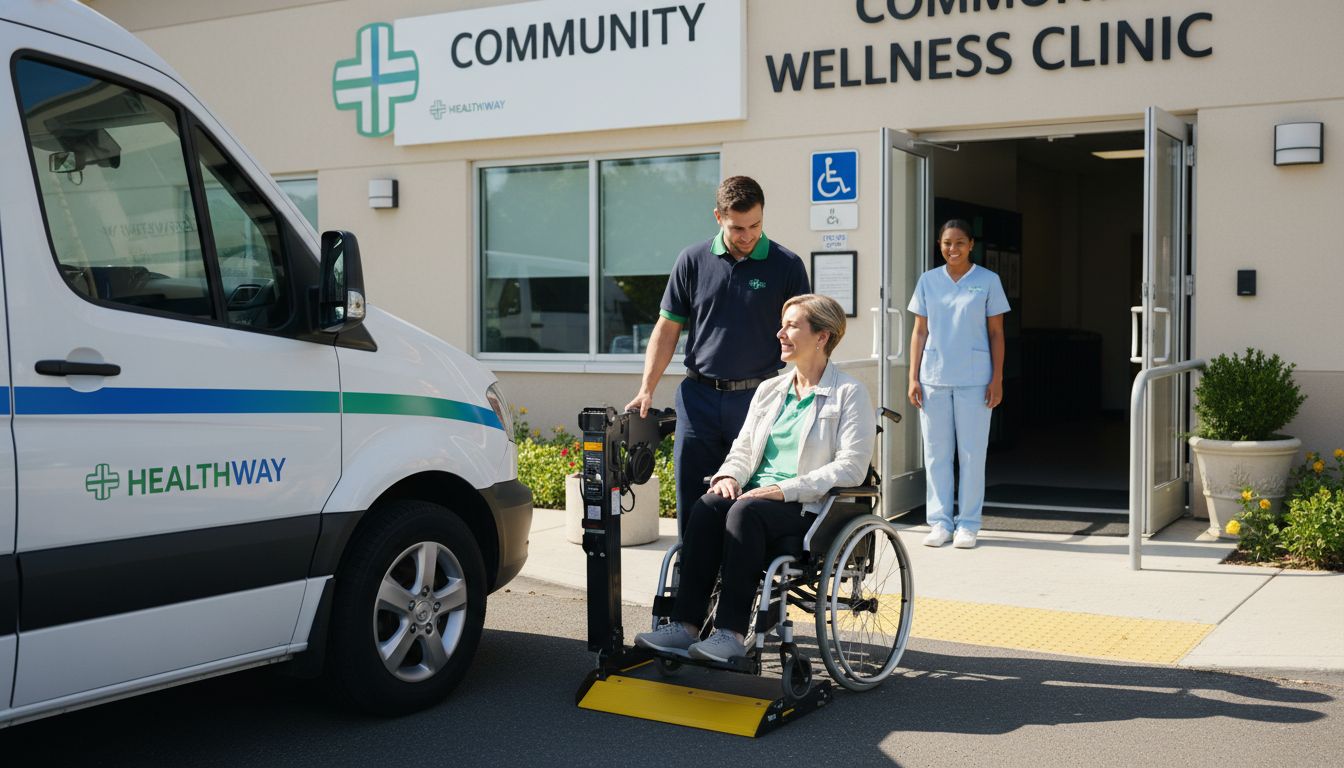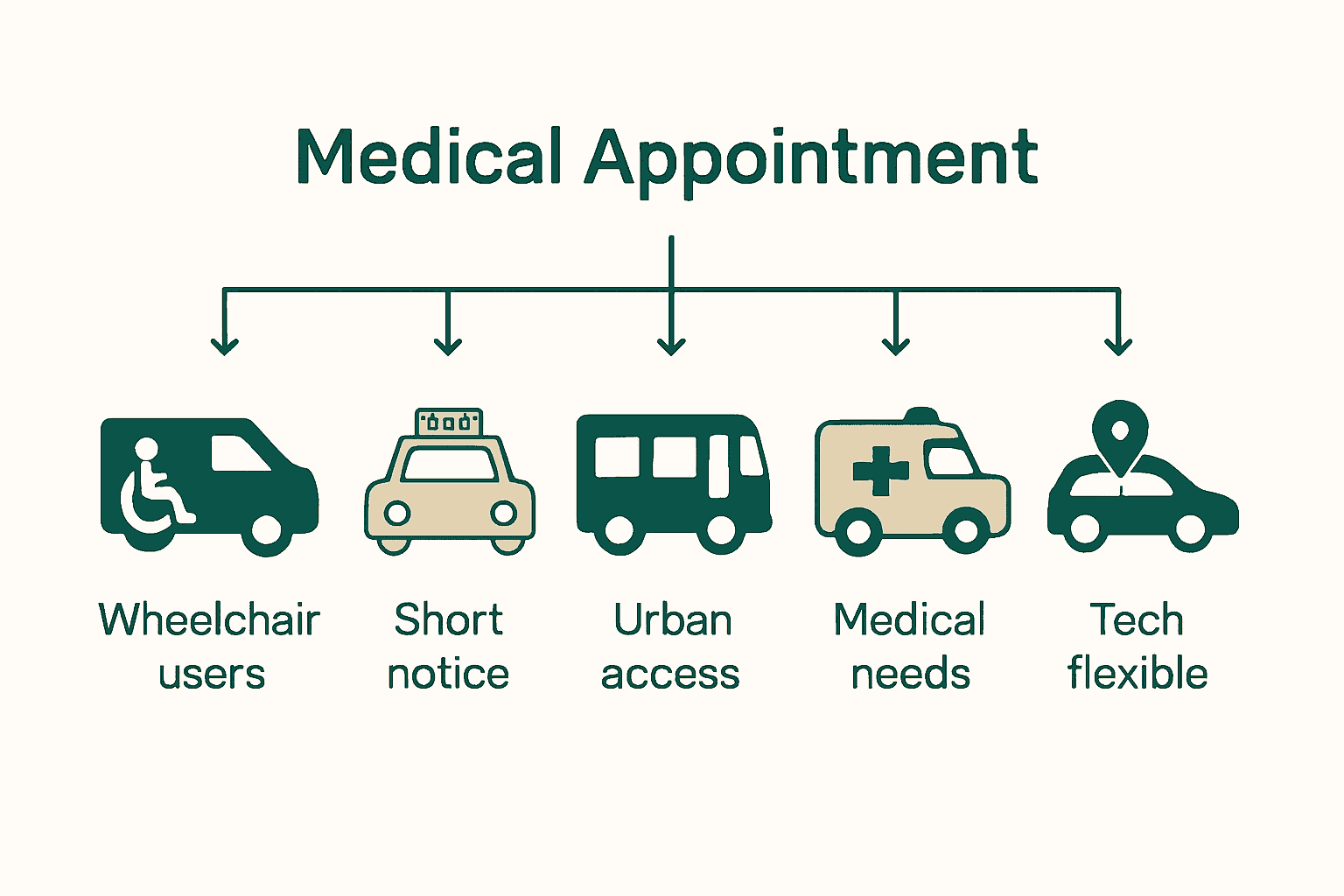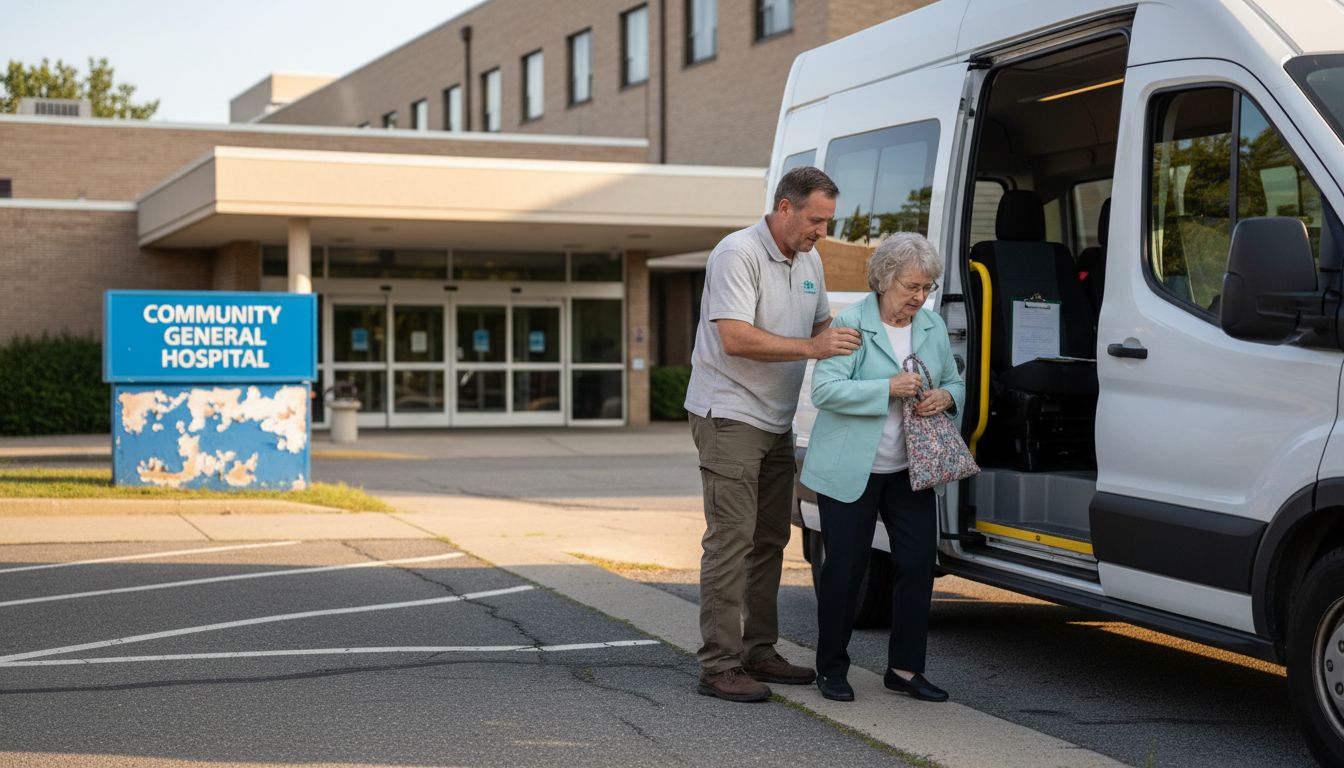Non Emergency Transportation: Everything You Need to Know

Nearly 3.6 million people miss medical appointments in the US each year because they cannot get reliable transportation. This silent hurdle can seriously disrupt care, especially for the elderly or those with chronic conditions. When patients cannot reach clinics or hospitals, simple barriers become major health risks. Understanding non-emergency transportation services sheds light on practical solutions, connecting people with the care they need and closing critical gaps in our healthcare system.
Table of Contents
- Defining Non Emergency Transportation Services
- Types of Non Emergency Medical Transport
- Key Features And Operational Processes
- Compliance, Licensing, And Safety Standards
- Cost Structures And Payer Responsibilities
Key Takeaways
| Point | Details |
|---|---|
| Non-Emergency Transportation (NET) | NET is essential for facilitating patient access to medical care when standard transportation is unfeasible. |
| Types of NEMT | NEMT includes various modes like public transit, taxi services, and ride-share networks, accommodating diverse patient needs. |
| Operational Processes | NEMT services require structured processes including patient verification, trip scheduling, and route optimization to ensure efficient access to care. |
| Cost Structures | Payment models for NEMT can vary, emphasizing the need for healthcare organizations to navigate complex financial systems to ensure service efficiency. |
Defining Non Emergency Transportation Services
Non-emergency transportation (NET) is a critical healthcare support service designed to help patients access medical care when they cannot use standard transportation methods. According to CMS, non-emergency medical transportation (NEMT) provides essential assistance for individuals who need help getting to and from medical appointments.
The scope of non-emergency transportation is remarkably broad. As Medicaid explains, NEMT encompasses multiple transportation options including:
- Public transit systems
- Taxi and van services
- Personal vehicle transportation
- Non-emergency ambulance transport
- Air transportation services
- Specialized transportation network services
These services are particularly crucial for specific patient populations who face transportation challenges. Patients might require non-emergency transportation due to various reasons such as mobility limitations, chronic health conditions, lack of personal transportation, age-related constraints, or economic barriers. The primary goal is ensuring patients can consistently and safely attend necessary medical appointments, thereby supporting continuous healthcare access and preventing potential health complications from missed treatments.
Understanding the nuanced role of non-emergency transportation means recognizing it as more than just a ride—it’s a vital healthcare support mechanism. Learn more about patient transportation services to fully appreciate how these critical services bridge healthcare accessibility gaps for vulnerable populations.
Types of Non Emergency Medical Transport
Non-emergency medical transportation (NEMT) offers a diverse range of transportation options tailored to meet various patient needs and mobility challenges. According to CMS, the accepted types of NEMT include several critical transportation modes that ensure patients can access necessary medical care.
The primary types of non-emergency medical transport encompass:
- Public Transit: Accessible bus and train systems
- Taxi Services: On-demand transportation for individual patients
- Van Transportation: Group or specialized vehicle services
- Personal Vehicle Transport: Reimbursement or support for patient-owned vehicles
- Non-Emergency Ambulance: Medical transport for patients requiring minimal medical supervision
Medicaid further expands this list by highlighting additional innovative transportation options. In some states, transportation network companies like Uber or Lyft have been integrated into NEMT services, providing flexible and technology-driven solutions for patient transportation needs.
Each transportation type serves unique patient requirements, considering factors like medical complexity, mobility limitations, and individual comfort. When selecting an appropriate transport method, healthcare providers and patients must evaluate medical needs, distance, physical constraints, and cost-effectiveness. For a comprehensive understanding of how these transportation services bridge critical healthcare access gaps, explore our guide on non-emergency medical transportation services.
Here’s a summary comparison of the main types of non-emergency medical transport:

| Transport Type | Key Features | Typical Use Cases |
|---|---|---|
| Public Transit | Bus/train systems Low cost |
Routine checkups Urban areas |
| Taxi Services | On-demand Individual rides |
Last-minute needs Short distances |
| Van Transportation | Group or specialized vans | Wheelchair users Group transport |
| Personal Vehicle Transport | Reimbursement option | Family rides Rural areas |
| Non-Emergency Ambulance | Medical supervision Equipped |
Limited mobility Medical monitoring |
| Ride Share Networks | App-based Flexible routing |
Technology access Urban settings |
Key Features and Operational Processes
Non-emergency medical transportation (NEMT) services operate through a structured and carefully managed process designed to ensure patient accessibility and medical care coordination. According to CMS, these services typically require preauthorization, with each transportation trip meticulously arranged in advance, including specific details like dates, times, and precise pick-up and drop-off locations.
The key operational processes for NEMT services involve several critical steps:
- Patient Verification: Confirming eligibility and medical transportation needs
- Trip Scheduling: Coordinating transportation logistics
- Route Optimization: Determining most efficient transportation method
- Medical Documentation: Tracking and maintaining required medical transport records
- Payment Processing: Managing reimbursement and billing mechanisms
Medicaid emphasizes that these services are fundamentally designed to increase healthcare access and improve equity for beneficiaries who lack affordable transportation options. The operational framework ensures that patients with mobility challenges or limited resources can consistently receive necessary medical care.
The financial aspect of NEMT services is equally nuanced. Costs can be billed directly to state Medicaid agencies or paid by beneficiaries through various mechanisms like public transit or specialized transport services. By implementing strategic healthcare operational efficiency strategies, healthcare systems can optimize these transportation processes, ultimately enhancing patient care and reducing systemic barriers to medical access.

Compliance, Licensing, and Safety Standards
Non-emergency medical transportation (NEMT) services operate within a complex regulatory framework designed to ensure patient safety, service quality, and operational integrity. According to CMS, providers must adhere to rigorous guidelines that distinguish between emergency and non-emergency medical transportation, specify accepted transportation types, and establish comprehensive service delivery systems.
The key compliance requirements for NEMT providers include:
- Vehicle Safety Standards: Maintaining vehicles meeting specific safety and maintenance criteria
- Driver Qualifications: Ensuring drivers have appropriate licenses, background checks, and medical certifications
- Patient Transport Protocols: Developing standardized procedures for patient pickup, transport, and drop-off
- Medical Necessity Documentation: Verifying and documenting transportation needs
- Insurance and Liability Coverage: Maintaining appropriate insurance protections
Medicaid emphasizes that providers are required to meet specific criteria to offer these critical services, with a fundamental requirement being the demonstration of an unmet transportation need for beneficiaries. This ensures that NEMT services are not just available, but truly necessary and targeted.
Navigating the complex landscape of healthcare regulations requires a comprehensive approach. Healthcare organizations must stay current with evolving compliance requirements, understanding the nuanced regulatory compliance standards that govern non-emergency medical transportation. This ongoing commitment to regulatory adherence protects patients, providers, and the broader healthcare ecosystem.
Cost Structures and Payer Responsibilities
Non-emergency medical transportation (NEMT) involves complex financial mechanisms designed to ensure accessible healthcare for vulnerable populations. According to CMS, the cost structures for these services can vary significantly, with multiple potential payment pathways depending on the specific transportation provider and beneficiary circumstances.
The primary cost allocation models for NEMT services include:
- Direct State Billing: Pre-authorized contractors billing Medicaid agencies
- Beneficiary Payment: Individuals paying for public transit or alternative transport
- Vendor Reimbursement: Transportation providers receiving direct compensation
- Partial Coverage Models: Shared cost responsibilities between agencies
- Sliding Scale Payments: Income-based transportation cost adjustments
Medicaid clarifies that beneficiaries can utilize NEMT for any medical service covered by Medicaid, including pharmacy visits, provided they demonstrate an unmet transportation need. This flexibility ensures that financial barriers do not prevent essential medical access.
Healthcare organizations can optimize these complex financial structures by implementing strategic healthcare cost containment approaches. By carefully managing transportation expenses while maintaining service quality, providers can create more efficient and patient-centered non-emergency medical transportation ecosystems.
Streamline Non-Emergency Medical Transportation with VectorCare
Navigating the challenges of non-emergency transportation requires precision and efficiency to ensure patients never miss crucial medical care. This article highlights key pain points like scheduling complexities, compliance demands, and cost management that healthcare providers face daily. VectorCare is designed to address these exact challenges by offering a comprehensive platform focused on automating patient logistics, optimizing dispatch, and maintaining regulatory compliance with ease.

Transform your non-emergency transportation operations today with VectorCare. Experience real-time updates, AI-driven scheduling, and seamless vendor management all in one place. Don’t let transportation hurdles delay patient care. Visit VectorCare now and discover how our digital solutions can boost efficiency, reduce costs, and elevate patient outcomes. Explore how VectorCare supports healthcare providers and payers striving for smooth and compliant patient transport by learning more about our integrated patient logistics platform and see the future of healthcare mobility.
Frequently Asked Questions
What is non-emergency transportation?
Non-emergency transportation (NET) is a healthcare support service that helps patients access medical care when they cannot use standard transportation methods. It ensures individuals can attend medical appointments safely and consistently.
What types of transportation options are available under non-emergency medical transportation?
Non-emergency medical transportation (NEMT) includes various options such as public transit, taxi services, van transportation, personal vehicle transport, non-emergency ambulance services, and ride share networks like Uber or Lyft.
How does the scheduling process for non-emergency transportation work?
The scheduling process for non-emergency transportation typically involves patient verification of eligibility, trip coordination logistics, route optimization for efficiency, and necessary medical documentation for record-keeping and billing purposes.
What are the compliance and safety standards for non-emergency medical transportation providers?
NEMT providers must adhere to vehicle safety standards, ensure drivers possess proper qualifications, establish patient transport protocols, verify medical necessity, and maintain adequate insurance and liability coverage.



